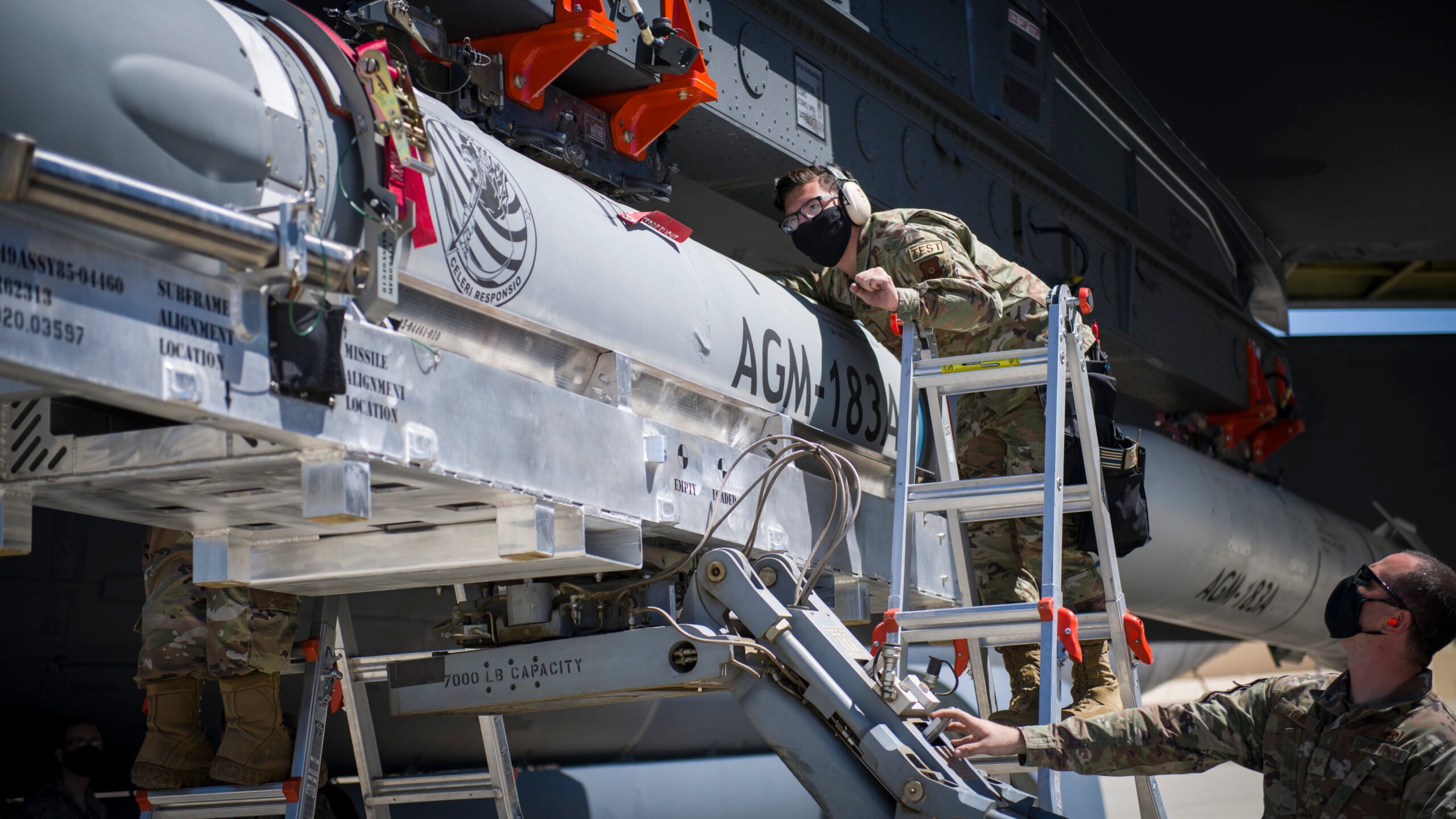
The AGM-183A Air-launched Rapid Response Weapon Instrumented Measurement Vehicle 2 is loaded under the wing of a B-52H Stratofortress at Edwards Air Force Base, California, Aug. 6, 2020. (US Air Force/Giancarlo Casem)
Edited at 3/9/22 at 5:28pm to add comment from Air Force Secretary Frank Kendall.
WASHINGTON: The US Air Force’s hopes for buying its first hypersonic missiles this year appear to be dead, with Congressional appropriators halving funding for the service’s flagship hypersonic weapons program in a new fiscal 2022 omnibus spending bill.
The Air Force had requested about $161 million in the FY22 budget request to buy the first 12 AGM-183A Air Launched Rapid Response Weapon (ARRW) missiles from manufacturer Lockheed Martin. However, the proposed spending bill cuts about $80 million of that total, stating that procurement of the new weapon is early to need.
“Due to recent failures and delays in testing that have extended the ARRW program schedule and put a first production lot contract at risk for award in fiscal year 2022, no procurement funds are provided in this Act for ARRW,” an explanatory statement for the bill reads.
The remaining $80 million would be transferred to ARRW’s research and development account, allowing the Air Force “to support an extension of the testing program and mitigate a projected funding shortfall,” the explanatory statement said.
While the omnibus bill has yet to pass the House or Senate, the proposed legislation is the result of extensive consultations between lawmakers and there are unlikely to be changes at the programmatic level as it moves through both chambers. The House is expected to vote on the bill this week.
While hypersonic weapons were a major priority of the the Trump-era Pentagon, Air Force Secretary Frank Kendall has called into question whether the service has done enough analysis to ensure it is optimally investing in the technology. Asked about the cuts to ARRW at the McAleese and Associates conference this afternoon, Kendall made clear that the ARRW program is not yet out of the woods.
“ARRW still has to prove itself,” he said. “So we need to do that, and we also need to take a larger look at what’s the right mix for the future. What are the things that will need investment?”
Speaking to Breaking Defense in January, Brig. Gen. Heath Collins, the Air Force’s program executive for weapons, was hopeful that the service would be able to successfully finish ARRW flight tests in time to allow for production to begin this year — although multiple test failures experienced last year had admittedly put the program in a time crunch.
Most recently, the service made a third attempt at a booster test in December, but during the flight, the launch sequence was aborted due to an unknown issue and the missile failed to launch.
“We have a bunch of test windows aligned and scheduled on the range throughout the year – the next one is in a couple months,” Collins said in January. “We are really focusing on getting the failure review board done, the corrective actions completed and trying to make sure we’re ready for that next test window.”
At that point, the House and Senate appropriations committees had already signaled that they were ready to slash funding for ARRW.
The House Appropriations Committee’s draft bill recommended a $44 million cut from the program — essentially cutting the funds needed for the four all-up rounds required to declare early operational capability — due to concerns that the program had become “increasingly delayed and compressed, increasing the concurrency risk” to the first production lot of weapons. The FY22 National Defense Authorization Act, which was signed into law late last year, endorsed this approach.
But ultimately appropriators included the larger, $80 million cut to the program recommended by the Senate Appropriations Committee in the omnibus spending bill.
Air Force picks Anduril, General Atomics for next round of CCA work
The two vendors emerged successful from an original pool of five and are expected to carry their drone designs through a prototyping phase that will build and test aircraft.


























